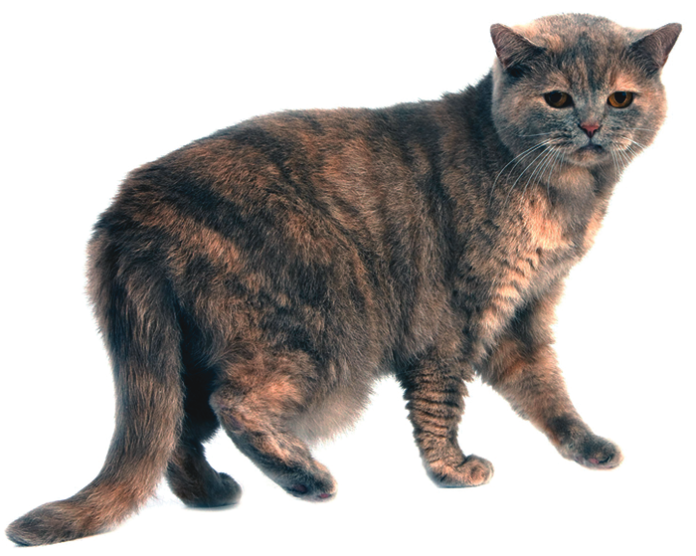You watch as your cat walks away, his belly pooch swaying gently in the breeze. What exactly is that loose skin fold on your cat’s abdomen?
This is technically your cat’s primordial pouch. It is not a condition secondary to spaying or neutering or even to being overweight. Almost all cats, even lions and tigers, have this skin flap, but its size can vary. Some cat breeds, such as the Pixie Bob and Egyptian Mau, have a description of the pouch written into their breed standard. You may not notice the primordial pouch until your cat is an adult.
This flap of skin runs pretty much the length of your cat, from the front legs to the rear legs, along the side of the abdomen. The pouch is usually most noticeable right in front of the rear legs. It can feel slippery or jellylike when you gently palpate it, depending on the amount of fat deposited in the area. It is not directly attached to muscle, so it is movable and somewhat elastic.
You may notice this pouch droop somewhat with age as your cat loses some muscle tone. It is important to recognize that this is a normal part of your cat’s anatomy, and that she doesn’t need plastic surgery to improve her figure!
There are many theories as to why cats have this extra loose skin. One theory is that it allows cats to stretch and leap more easily. A second is that it helps to protect vulnerable abdominal organs from injury if a cat is in a fight. It has also been proposed that the pouch is handy when a cat gorges on a big meal, allowing for easy expansion of the abdomen.
This pouch of skin can make it tricky to evaluate your cat’s weight. Ideally, your cat will still have an hourglass shape when looked at from above and meet other body condition scores for fitness. The primordial pouch tends to sway as your cat moves, whereas an obese cat is round and firm.




